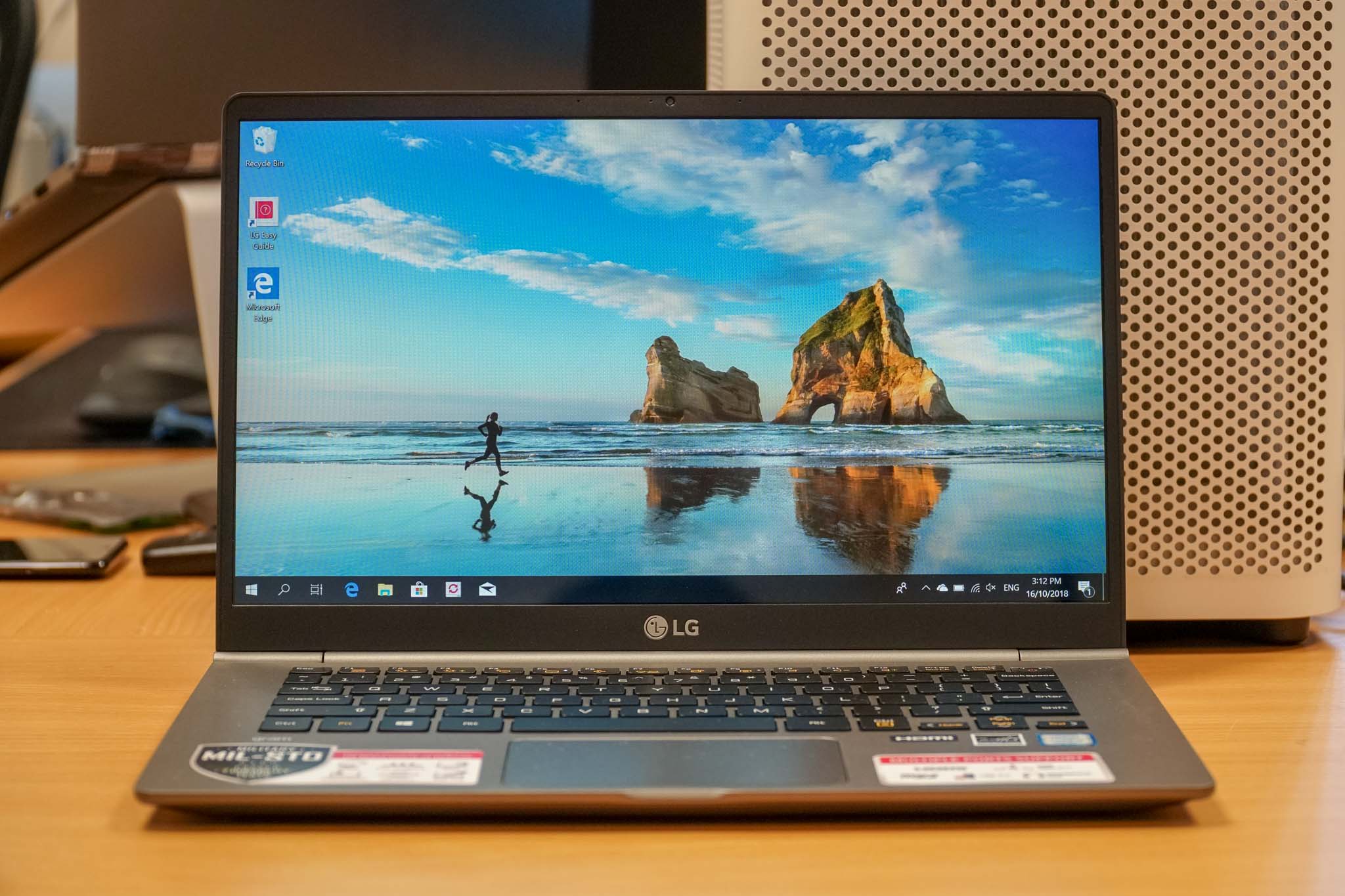
We all love ultra-thin and ultralight notebooks. LG’s Gram notebooks try to woo us with weight, or the lack thereof. The 14-inch LG Gram notebook in this review weighs just 995 grams. This feather light notebook isn’t that light on features.
The most surprising thing to me about the LG Gram is that despite it being ultralight, it’s actually quite tough. It’s toughness has a rating, that of the U.S. military MIL-STD 810G durability, passing stringent criteria for resistance to impact, pressure, and temperature. I didn’t go conduct my own durability tests, but this LG Gram does feel like it can withstand some rough use.
Launched in April this year, the LG Gram includes 15.6-inch, 14-inch, and 13-inch models with varying options. My 14-inch LG Gram is a basic model powered by Intel Core i5-8250U processor, 8 GB of RAM, and 512 GB of M.2 SATA3 SSD.
The LG Gram’s overall design is simple. The matte gray exterior is clean and functional. The chassis is made out of Magnesium alloy (Nano Carbon with Magnesium), and there’s a bit of flex in the body. It doesn’t feel anything like a solid block of metal like, say, a MacBook Pro does. But perhaps the lightness and flex gives it the durability to resist damage from impact.
There’s a reasonable selection of ports on the LG Gram. It’s nice to see microSD, though full-sized SD card slot might be the kind most appreciated by photographers. I don’t see users of microSD cards needing
There are two USB 3.0 Type-A ports, one each on the left and right sides. The HDMI port is convenient too.
See the USB 3.0 Type-C port there? Unfortunately, it’s just USB 3.0 Type-C, it doesn’t do Thunderbolt 3. Also, it can’t be used to provide power to the LG Gram. The notebook needs to be powered by the DC jack.
The LG Gram’s Full HD 1920×1080 resolution display looks good. The bezels around the screen aren’t the thinnest, but they are certainly not excessive either. While the display is bright and looks good, its colour performance comes in a little below average, scoring 67% NTSC and 72% AdobeRGB. This may be a concern to you if you require colour accuracy in your work.
Though the display is glossy, it isn’t very reflective. Working outdoors with the LG Gram is possible, given that the display is also relatively bright.
The webcam above the screen has HD resolution (720p), which perhaps suffices for the occasional video calls. There’s no IR camera for Windows Hello logins.
There is, however, a Windows Hello fingerprint reader integrated into the power button on the keyboard deck.
The keyboard itself is decent, comfortable to type on, though nothing outstanding about it. There is two levels of backlighting, so you should be able to work comfortably in the dark.
For connectivity, the LG Gram supports Bluetooth 4.1 and 802.11 ac 2×2 Wi-Fi.
In PCMark 10 benchmark tests, the LG Gram performs comparably to other notebooks powered by similar Intel Core i5-8250U processor.
- PCMark 10 Overall: 2191
- Essentials: 6193
- Productivity: 4980
- Digital Content Creation: 2528
- Gaming: 800
Battery longevity of the LG Gram’s 72 Wh battery is crazily impressive. PCMark 8’s battery test under the Home Conventional workload ran for 544 minutes, the best of any notebook that I’ve tested this year. For comparison, the next best I’ve seen in my own reviews is the massive ASUS ZenBook Pro which ran quite far behind at 326 minutes.
The 14-inch LG Gram as configured in this review retails for S$1,999.
Conclusoin
If you’re looking for an ultralight notebook, it’s hard to beat this very functional 995 grams 14-inch LG Gram.
Pros:
- Very lightweight
- Decent selection of ports
- Extremely long-lasting battery
- MIL-STD 810G durability
Cons:
- No Thunderbolt 3
- USB Type-C port doesn’t supply power to notebook
